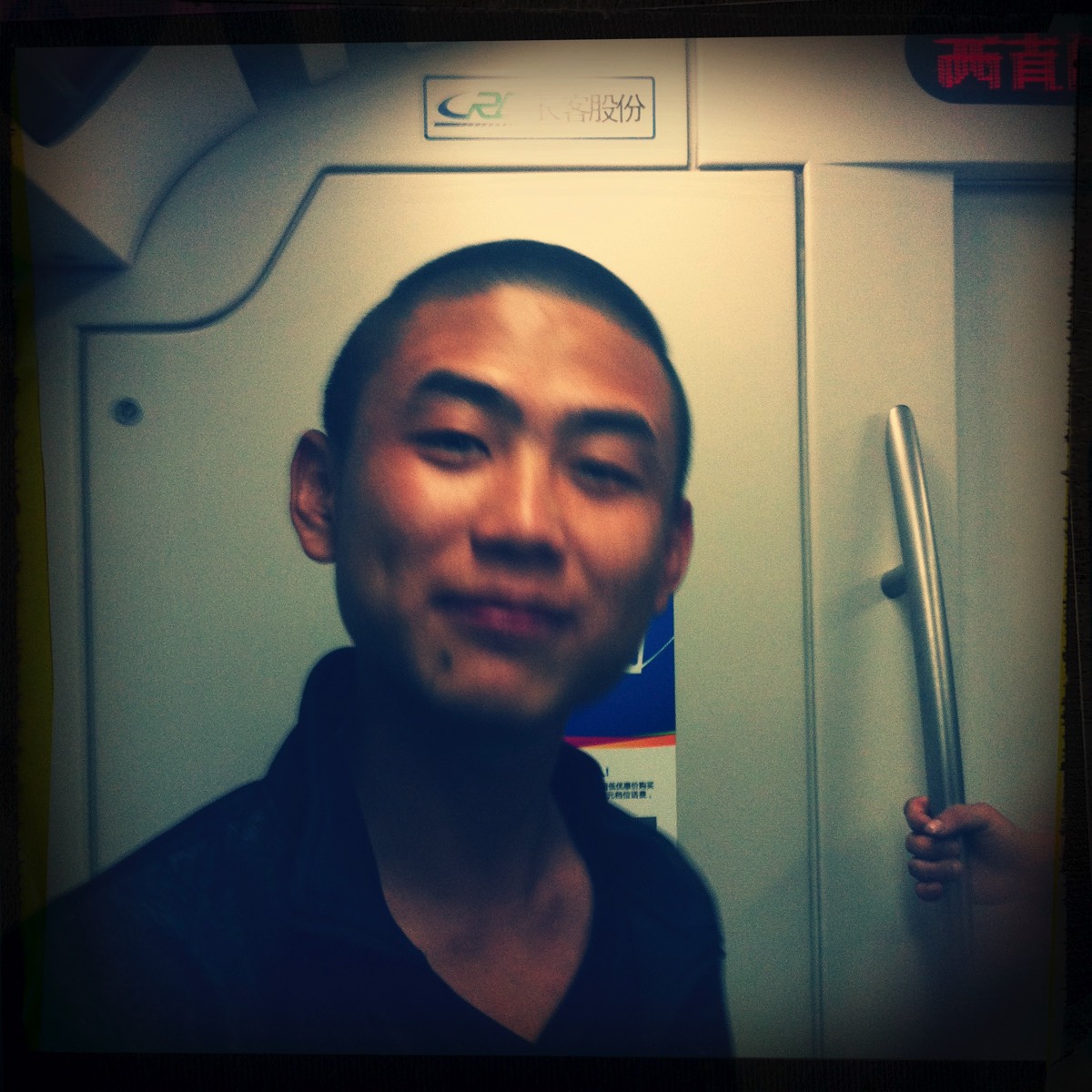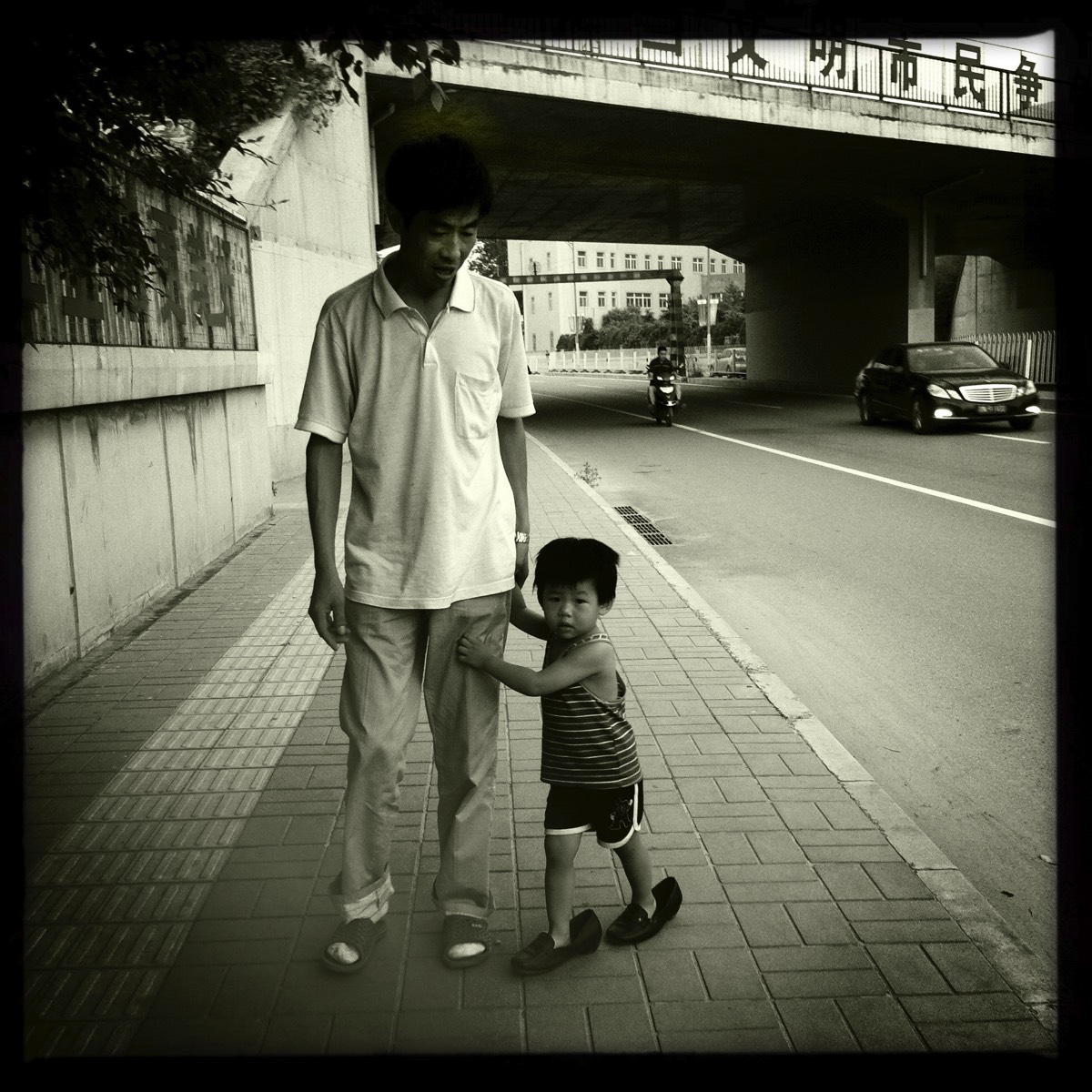garrie maguire
art practice // inquires into masculinity

1000 Moments of Love and Solitude on the Beijing Public Transportation System (2011-14)
Lost. Wasted. Alone in a crowd. Empty. Crushed.
Body odour. Flesh under cheap fabric rubs against wealth. Stop. Mind the gap. Exit. Scan. Exit fully. Beijing public transport is. It is all walks, standing still. Sombre. Removed. Distant. Quite except the rumble of the tracks. A glance captured. A moment of revelation. Eyes in discomfort. Stop. Exit. Crowds waiting to enter.
I was on a grand adventure, the longest trip overseas ever, perhaps even years, if I played it right, perhaps a new career, perhaps people will come around to debating my themes. My Facebook feed had become a constant stream of every airport that any friend visited, and planes waiting for boarding. Then came the unfortunate next phase, that of the selfie. My time line was filling with a small group of friends documenting their faces on a daily basis. The more I thought about this development the more problematic it became. This series is a counterpoint to the selfie.
I joined Red Gate Gallery’s residency programme, to fill in for a cancelation, so it was a short, 5 weeks. I didn’t want to waste a moment, so I was documenting everything I did. I wanted this to be major kickstart to a new phase of my practice, so I was not going to waste a minute.
Beijing has a great public transport system. It is the goal of the subway administration that no one will more than 800m from a subway station. The Red Gate Residency studios are in one of the newer art districts. These are 20km from the city centre. Each time I went to meet someone I would be facing an hour or two on the subway and later the buses.
I had just bought the Apple iPhone 4 which came with an reasonable camera, but the Hipstermatic application turned it into a fun camera and with the iPhone 4 they improved the filters to high light sharpness. I noticed one other thing about making the photos, one could do it without attracting attention. Though being one of the few foreigners on the train or bus did gain some attention. So on each train, bus, taxi or inter-provence train and going to and fro, out would come my phone and the photo making would begin while everyone else was playing games.
The seflie has endlessly repeated subject and framing, with the context relegated to the corners of the frame. My train photographs are about context, they are mainly about the stolen moments when people are not posing for the camera, they are not interaction with me as ‘foreigner’. In some cases they do work out what I’m doing and I have included some of these more aware photographs. Most of these photographs are documentary of what happens in real life, unaffected. This can lead the viewer to have a strong emotional reaction, either for the ‘invasion’ of privacy or for the guts to make the images. At this current point more people fall on the earlier side. This project could never get through an university ethics committee. I would pose a different question, is it important to see life as it is lived or life in advertising, on Facebook, and media that has been mediated to be ‘better’? This series is ‘curated’ by the photographer, both in selection of subject, framing, and inclusion of images. It engages with my background in gender studies looking at masculinity. I wanted to produce a document that reflected my experience. This book is voyeuristic, it is about seeing people in a way they do not control and if you have a problem with that put this back on the shelf. We do like to see what we are not meant to see.
On the most public transport in Beijing as well as many other cities the state or the private company is already making moving images of the passengers. After the Edward Snowden revelations about the USA spying culture of the NSA, do we trust the state to watch over us in a Big Brother way? Is there a difference between state surveillance and an artist’s or photojournalist’s inquiry? One would can argue that the state is more sinister, ask people who have found themselves targeted by the state.
After two years of photography, I found I was repeating myself and the number of images dropped off. I arrived in Beijing February 2011 and abruptly left on May 30, 2014.









Exhibition History
This project has not been exhibited.
